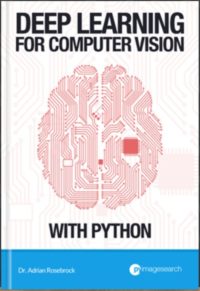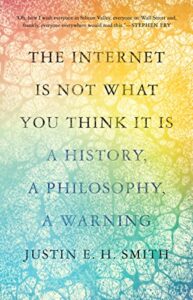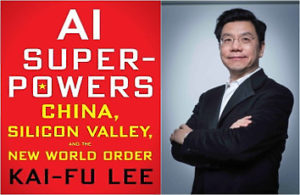In this post I will be reviewing a book called “Deep Learning for Computer Vision with Python“ (DL4CV) that was recently published by Dr Adrian Rosebrock, author of “Practical Python and OpenCV” and most notably the computer vision blog PyImageSearch.
I have already (highly) talked about Dr Rosebrock before on my blog in my post on starting a career in computer vision and I mentioned the fact that PyImageSearch is one of my favourite blogs on the internet. So, it is with great pleasure that I sit down here to write this review.
(Fun fact: I’m writing this review in the wild wilderness of Tasmania. What a beautiful place this is! But, alas, we digress…)
In the first part of this post I will focus on presenting a summary of the book(s) and then in the second part I will give you my thoughts on the work itself. But for those that want the TL;DR version of the review, I’ll give that to you now:
The book is phenomenal. The concepts on deep learning are so well explained that I will be recommending it to anybody not just involved in computer vision but AI in general. If you’re thinking of getting into deep learning for computer vision or wish to fine-tune what you already know, forget about the rest – this is the place to start and finish.
Summary of DL4CV
Due to the huge amount of content that it covers, DL4CV is divided into three volumes: Starter Bundle, Practitioner Bundle, and ImageNet Bundle. Each volume builds on top of the previous one and goes further into the world of deep learning for computer vision. The reason why the volumes are called bundles is that they are each accompanied by additional components such as a downloadable pre-configured Ubuntu virtual machine, source code listings, and access to a companion website. Video tutorials and walkthroughs for each chapter are also advertised to be coming soon.
The Starter Bundle is all about the basics of machine learning, neural networks, convolutional neural networks, and working with datasets. And it truly is a starter bundle because half the book is spent laying down a solid foundation for beginners to deep learning. No knowledge is presupposed (although some experience in computer science or even computer vision I would consider to be advantageous here). Deep learning is also presented on the fundamental level with topics covered such as convolutional neural networks (CNNs), their famous implementations, and the Keras framework. Throughout the book, interesting real-world problems (e.g. breaking captchas) are solved with source code provided and explained at each and every step of the way.
The next volume is the Practitioner Bundle that immerses the reader even further in the world of deep learning. More advanced topics and algorithms are covered such as data augmentation, optimisation methods, and the HDF5 data format. Famous implementations of CNNs are also revisited but in a more in-depth manner. This volume was written for those that want to take computer vision and deep learning (whether it be in academia or the industry) seriously. Once again, practical examples with source code are provided every step of the way.
The final volume is the ImageNet Bundle. The first part of the volume is focused on the ImageNet dataset and the training on it of state-of-the-art CNNs. The second part focuses on even more real-world applications of deep learning and computer vision. Transfer learning and other training techniques are discussed in great detail to the point where readers will be able to reproduce the results seen in seminal deep learning papers and publications. This volume was written for those who want to reach a research level of deep learning in computer vision.
My Thoughts
As I said in the TL;DR section above, this book is phenomenal. And I don’t say things like that lightly – and likewise my words aren’t hot air, either. Prior to returning to the industry this year, my main source of employment was education. I taught and lectured in high schools, primary schools, universities, and privately for eight years. During that time, I acquired a good eye for textbooks that truly give the most to their students in each and every class. A lot of good books exist like this in the fields that I taught in (mathematics, English, philosophy, and computer science). But then sometimes you stumble upon the amazing textbooks – the ones that are just so well-written and structured that they make your job of explaining and helping to assimilate things incredibly easy.
And this is one such book.
Let me tell you, I know a good educator when I see one – Dr Adrian Rosebrock is one such person. This guy has talent. If I were working at a school or university, I’d hire him without even conducting an interview (well, maybe a quick one over the phone just to make sure he’s not a talented nutcase :P)
I really believe that his talent has produced something unique in the field of deep learning, especially because of the following two characteristics:
- He understands that when it comes to learning you need to get your hands dirty and do something practical with any newly-acquired theory. That’s the best way to assimilate knowledge. In this respect, all his chapters follow this principle and provide hands-on examples with code to help cement the concepts raised and discussed.
- His explanations are so ridiculously lucid that he is able to make state-of-the-art academic publications reachable to non-academic people. This is rare. Believe me.
I now work in artificial intelligence in the industry and I am being pushed into a training position in my company. When it’ll come to teaching deep learning, this is the book I will be telling my fellow employees to work through and read with me. And there’s a strong chance that his book will be made into the go-to textbook at universities because of how good it is.
But for that to happen, there is one thing that will need to be touched up. And this thing is my sole criticism of the book.
This criticism is that, in my opinion, there are too many typos (spelling mistakes, missing words, etc.) and grammatical mistakes scattered throughout the book. I understand that such things happen to every writer, but I think that there is an overabundance of them here. I’d say that on average there is one such mistake every few pages. At that rate it can get a little bit frustrating and distracting when you’re trying to focus on the content. When it comes to grammatical mistakes, I’m talking about things like mixing up words such as “affect” and “effect” and “awhile” and “a while”. These creases will need to be ironed out if the book is to be put on shelves in a prominent place in universities and colleges.
However, Dr Rosebrock has provided an easy means to submit mistakes like this to him via the companion website. So, let’s hope that the open-source community will help him out in this respect.
Having mentioned this criticism, I must again underline one thing: this is a unique book and no matter the number of typos and grammatical errors (especially if they will be undoubtedly fixed over time), I hope DL4CV will one day become a classic of deep learning and computer vision. In fact, I’m sure it will.
Summary
In this post I reviewed the book “Deep Learning for Computer Vision with Python” written by Dr Adrian Rosebrock of the PyImageSearch blog. I gave a brief summary of the three volumes and then presented my thoughts on the work as a whole. I mentioned that I think Dr Rosebrock is a talented educator who has written a very good book that explains very difficult concepts exceptionally well. His focus on both theory and implementation is unique and shows that he (perhaps intuitively) understands best-practices in pedagogy. I will be recommending DL4CV to anybody not just involved in computer vision but AI in general. And I hope DL4CV will become a classic textbook at universities.
To purchase “Deep Learning for Computer Vision with Python” or to get more information on it, see the book’s official page.
To be informed when new content like this is posted, subscribe to the mailing list:




Hello although you are saying all the good things about this book. perhaps you can say that the starter bundle cost almost 100 USd and the advanced one cost 700 USD?
Yes, I guess I could have mentioned that. I know that Dr Rosebrock (some time ago) responded to people criticising him about the cost of his books here: https://www.reddit.com/r/computervision/comments/7ewurv/reviews_of_deep_learning_for_computer_vision_with/ You might be interested in reading that (this review gets thrown into the discussion there somewhere too, ha!).
did you pay for this book/packages?
Hi,
The book is not free, if that’s what you’re asking. Each bundle costs extra. See the book’s official page (given at the bottom of the post) for information on pricing. If you’re asking whether I got paid for this review, then no, I didn’t. These are my honest words.
All the best,
Zig